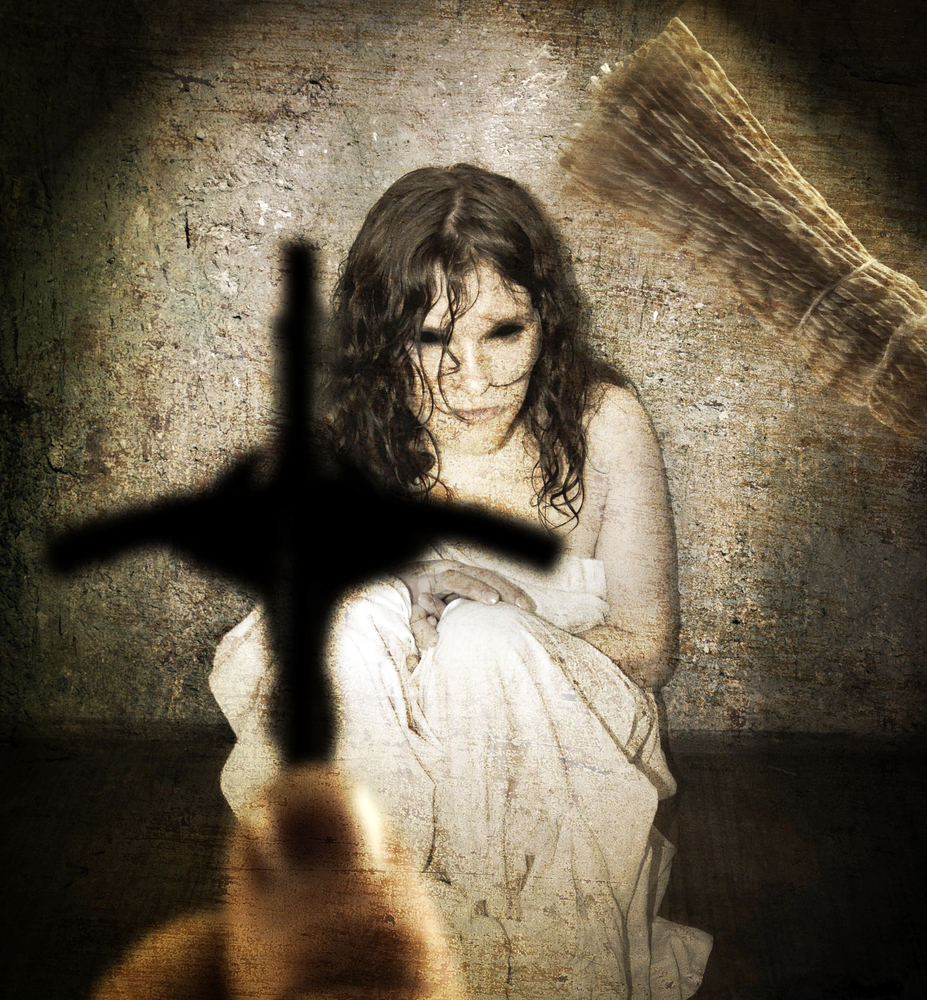Exorcism: Facts and Fiction About Demonic Possession
The belief that demons exist and can possess people is of course the stuff of fiction and horror films — but it is also one of the most widely-held religious beliefs in the world. Most religions claim that humans can be possessed by demonic spirits (the Bible, for example, recounts six instances of Jesus casting out demons), and offer exorcisms to remedy this threat.
The idea that invading spirits are inherently evil is largely a Judeo-Christian concept; many religions and belief systems accept possession by both beneficent and malevolent entities for short periods of time as uncommon — and not especially alarming — aspects of spiritual life. Spiritualism, a religion that flourished across America in the 1800s and is still practiced in a few places today, teaches that death is an illusion and that spirits can possess humans. New Agers have also long embraced a form of possession called channeling, in which spirits of the dead are said to inhabit a medium's body and communicate through them. Hundreds of books, and even some symphonies, have been allegedly composed by spirits.
Fictional exorcisms
Hollywood, of course, has been eager to capitalize on the public's continued fascination with exorcism and demonic possession with films often dubbed "based on a true story." There are countless exorcism-inspired films, including "The Last Exorcism," "The Exorcism of Emily Rose," "The Devil Inside" and "The Rite" — wildly varying in quality, originality, and scariness. The greatest cultural influence, of course, came from the classic "The Exorcist." In the weeks after the film came out in 1974, a Boston Catholic center received daily requests for exorcisms. The script was written by William Peter Blatty, adapted from his best-selling 1971 novel of the same name. Blatty described the inspiration for the film as a Washington Post article he’d read in 1949 about a Maryland boy who had been exorcised. Blatty believed (or claimed to believe) it was an accurate account, though later research revealed the story had been sensationalized was far from credible.
Michael Cuneo, in his book "American Exorcism: Expelling Demons in the Land of Plenty," credits Blatty and "The Exorcist" with much of the modern-day interest in exorcism. As for historical accuracy, though, Cuneo characterizes Blatty's work as a massive structure of fantasy resting on a flimsy foundation of one priest's diary. There really was a boy who underwent an exorcism, but virtually all of the gory and sensational details appearing in the book and film were wildly exaggerated or completely made up.
Real exorcisms
While many Americans think of real exorcisms as relics of the Dark Ages, exorcisms continue to be performed, often on people who are emotionally and mentally disturbed. Whether those undergoing the exorcism are truly possessed by spirits or demons is another matter entirely. Exorcisms are done on people of strong religious faith. To the extent that exorcisms "work," it is due to the power of suggestion and psychology: If you believe you're possessed (and that an exorcism will cure you), then it just might.
Get the world’s most fascinating discoveries delivered straight to your inbox.
The word exorcism derives from the Greek word for oath, "exousia." As religious studies scholar James R. Lewis explains in his book "Satanism Today: An Encyclopedia of Religion, Folklore, and Popular Culture," "To exorcise thus means something along the lines of placing the possessing spirit under oath — invoking a higher authority to compel the spirit — rather than an actual 'casting out.'" This becomes clear when the demonic entity is commanded to leave the person, not by the authority of a priest but instead, for example, "in the name of the Father, and the Son, and of the Holy Spirit."
The Vatican first issued official guidelines on exorcism in 1614, and revised them in 1999. According to the U.S. Conference of Catholic Bishops, signs of demonic possession include superhuman strength, aversion to holy water, and the ability to speak in unknown languages. Other potential signs of demonic possession include spitting, cursing, and "excessive masturbation."
Along with a handful of Vatican-sanctioned exorcists, there are hundreds of self-styled exorcists around the world. After attending 50 exorcisms during research for his book, Michael Cuneo states that he never saw anything supernatural or unexplainable: No levitation or spinning heads or demonic scratch marks suddenly appearing on anyone's faces, but many emotionally troubled people on both sides of the ritual.
While most people enjoy a scary movie, belief in the literal reality of demons and of the efficacy of exorcism can have deadly consequences. In 2003, an autistic 8-year-old boy in Milwaukee, Wis., was killed during an exorcism by church members who blamed an invading demon for his disability; in 2005 a young nun in Romania died at the hands of a priest during an exorcism after being bound to a cross, gagged, and left for days without food or water in an effort to expel demons. And on Christmas Day 2010 in London, England, a 14-year-old boy named Kristy Bamu was beaten and drowned to death by relatives trying to exorcise an evil spirit from the boy.
Benjamin Radford is deputy editor of Skeptical Inquirer science magazine and author of six books including "Scientific Paranormal Investigation: How to Solve Unexplained Mysteries." His website is www.BenjaminRadford.com.
Related:


